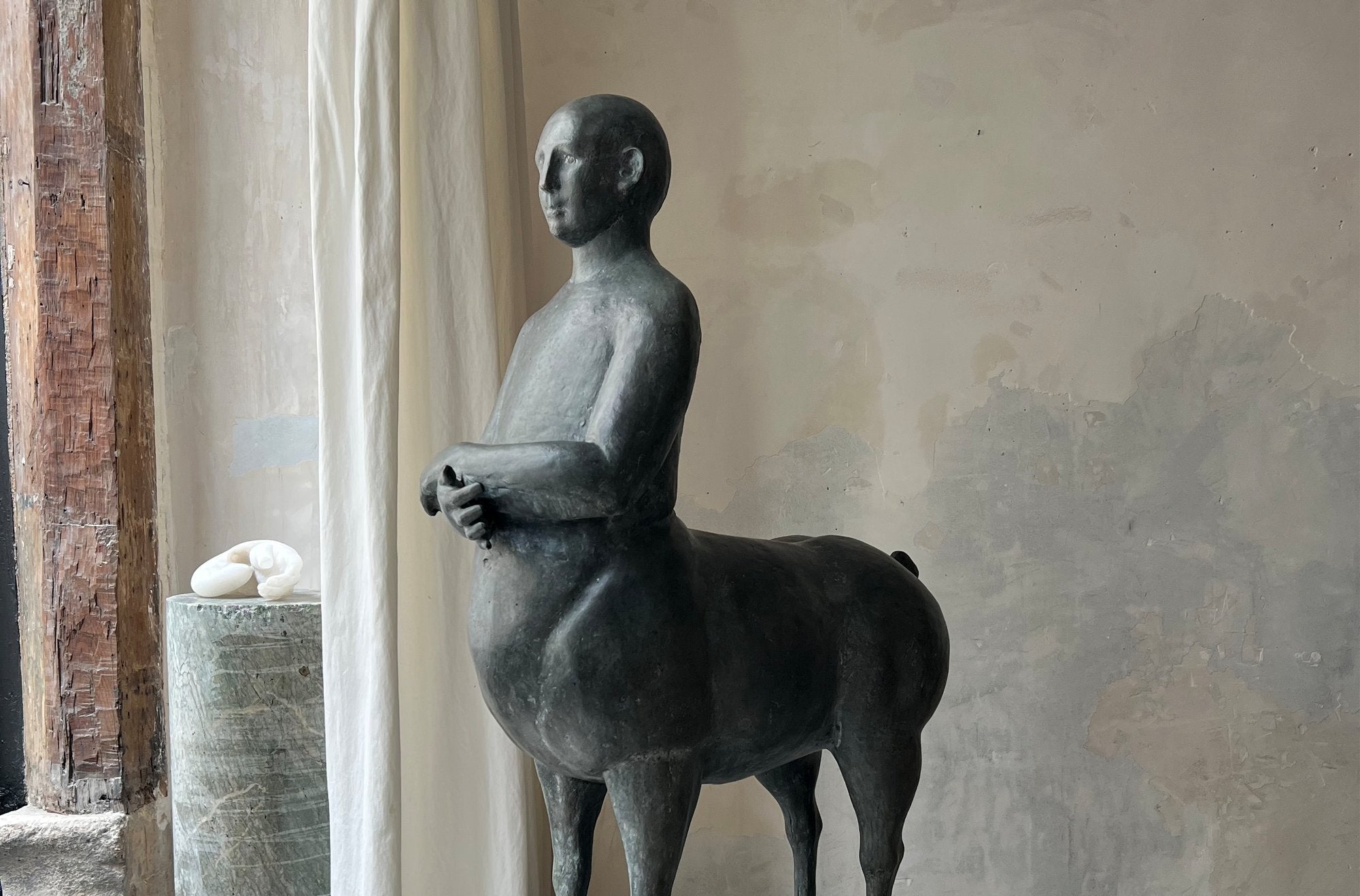Etruscans
Laeticia de Bazelaire
Laetitia de Bazelaire's sculptures are a unique reflection on the original and primordial relationships between man and nature. She uses the imagination of myth, but also our own history, to create a bestiary populated by hybrid beings and simple "Human Beings" with absent arms, static and solitary, who contemplate our modern agitation. The artist invents a language and a dreamlike universe where animality, the community of beings and the sacred mingle.
Inspired by antiquity, these essential and familiar figures made of whitewashed wood, however, do not give off any "disturbing strangeness." Rather, these sculptures invite us to a gentle presence of the strange.
These are silent works, magical beings that stand, calm and solid, in the middle of our space, observing us. We are observed by these works much more than we observe them. It is the return of a past world that emerges before our eyes and calls out to us, without saying a word...
Laetitia de Bazelaire believes that "our society needs myths and beliefs, because the function of myth is to give meaning to the world and to human existence." Her sculptures therefore attempt to reiterate fabulous, exhilarating, and significant events, as do certain rites. Here, sculpture has this function of Incarnation in the true sense, that is, of manifestation of the sacred. If modernity is characterized by a disenchantment with the world, this means that our world has become depopulated. It is therefore a question of repopulating it with mythological characters, intense human figures, hybrid beings, and mysteries, so that they are once again contemporary to us.
Jean-François Jaudon
"I propose to tell of the metamorphoses of forms into new bodies; O gods (for these metamorphoses are also your work), assist my enterprise with your breath and lead this poem without interruption from the most distant origins of the world to my time."
Ovid, The Metamorphoses, Book One.






